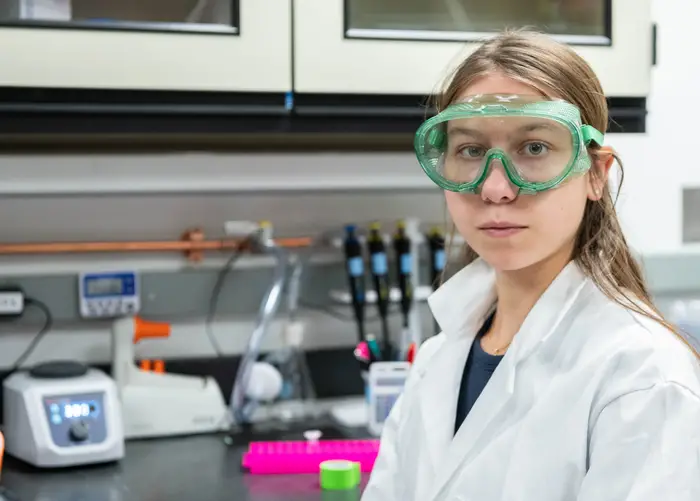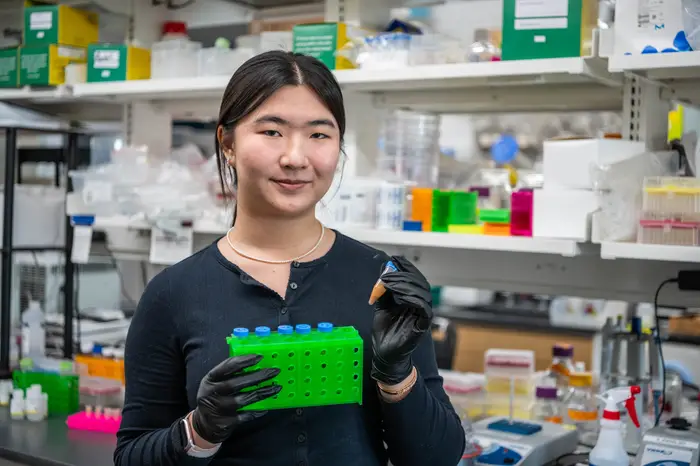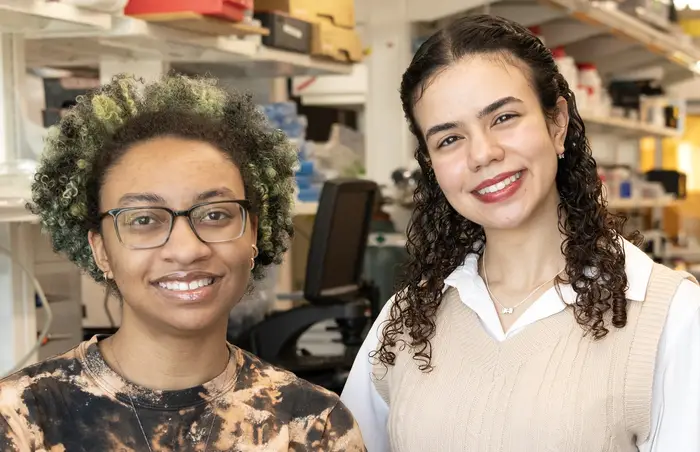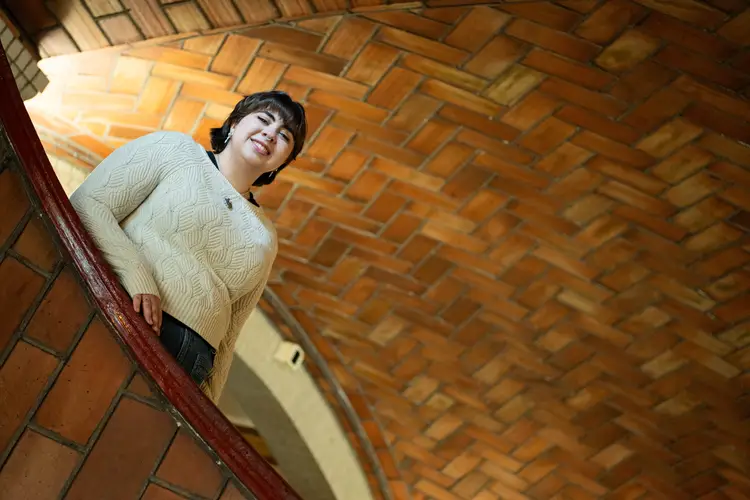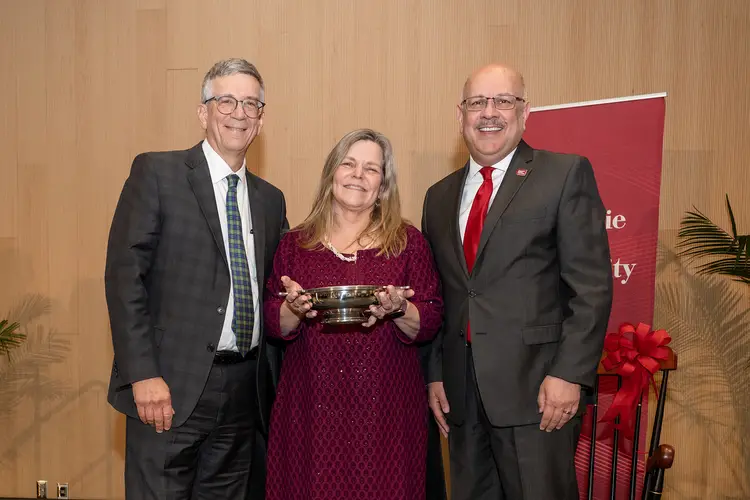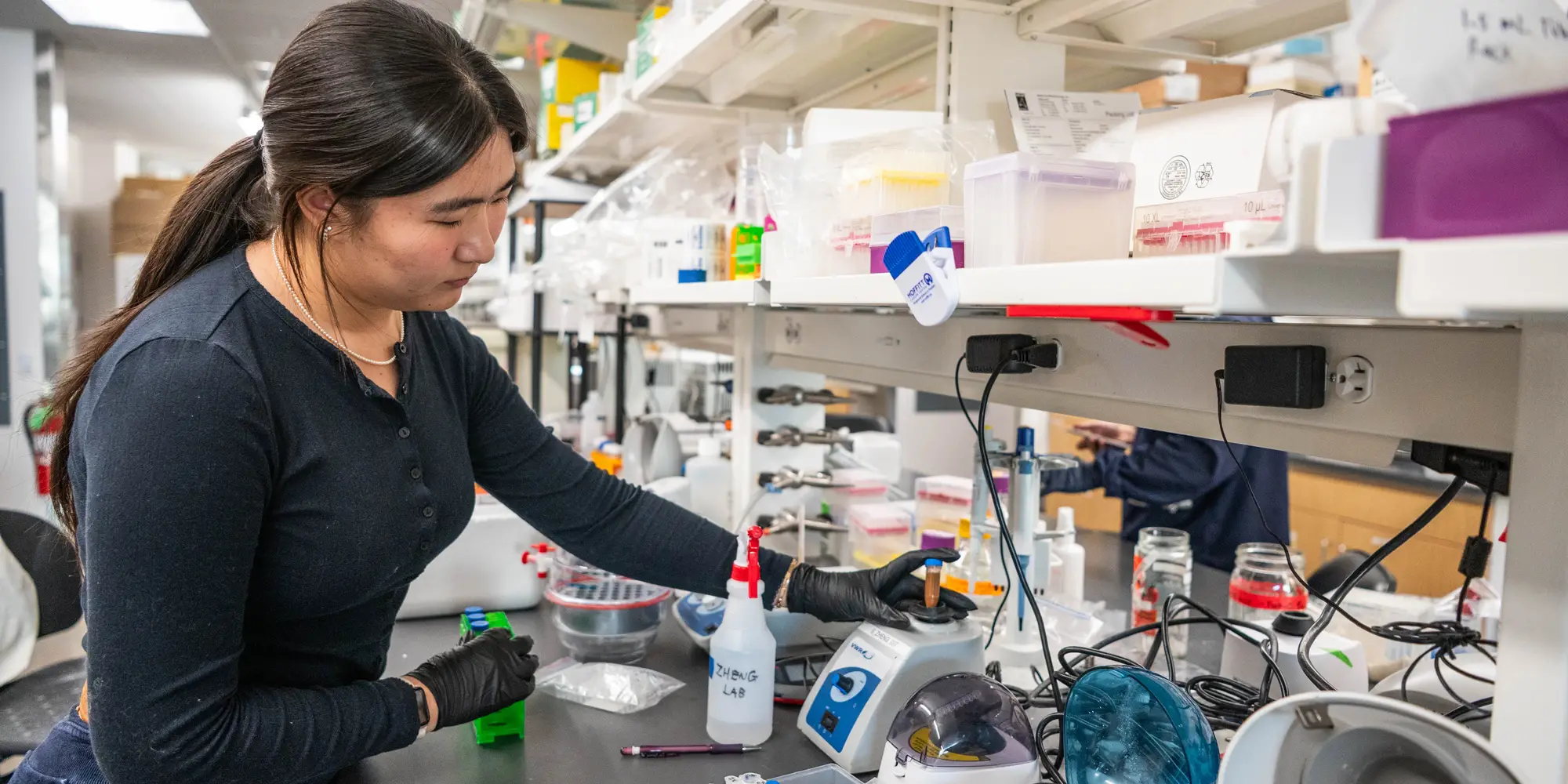
Research Rising Stars: SURF Students Take on Complex Biomedical Challenges
Media Inquiries
Carnegie Mellon University’s Summer Undergraduate Research Fellowship(opens in new window) (SURF) program provides funding for undergraduates to work full time on research projects during the summer. Many students continue those projects beyond that time, including these three students who worked with their mentors to ask big questions about basic biology.
Gomes-Jourdan examines key protein to improve ovarian cancer outcomes
Noémie Gomes-Jourdan, a recent graduate from CMU’s Mellon College of Science(opens in new window), wants ovarian cancer patients to have more treatment options. Now a research assistant, Gomes-Jourdan is working under Sandra Cascio(opens in new window), a principal investigator at the Magee-Womens Research Institute(opens in new window), to improve the effectiveness of a treatment called immune checkpoint inhibitor (ICI) therapy, which can enhance the body's ability to fight cancer by blocking proteins that prevent the immune system from attacking cancer cells.
Gomes-Jourdan said that though this type of therapy has proven effective with other cancers, it doesn’t work well for ovarian cancer, which has the highest mortality rate of all female reproductive cancers. ICI has a favorable outcome in only 10%-15% of ovarian cancer patients.
Researchers believe that immune checkpoint inhibitor therapy doesn’t work well for ovarian cancer patients because there are immunosuppressive components in the tumor microenvironment that prevent the body's natural immune response from effectively combating cancer cells. The Cascio lab seeks to target one particular aspect of this tumor environment known to suppress the body's innate defense.
“There's this protein called TGFBI that is correlated with poor response to this therapy in ovarian cancer patients. We're trying to understand how it's affecting immune cells within the tumor so that we can target it and have this therapy work better,” Gomes-Jourdan explained.
In her SURF research project, Gomes-Jourdan aimed to prove that TGFBI binds to specific integrins (proteins that function as receptors and help cells adhere to other cells and the surrounding matrix) on immune cells, inducing changes in cell behavior. The summer experiments did not go exactly as planned, requiring a close examination of the literature and methods.
“It was definitely more trial and error than I had seen in the past,” Gomes-Jourdan said. “Not getting a result right away really pushed me to ask questions, look into the literature and talk to lab members who had done this type of experiment before about their protocols.”
The research is ongoing. As a next step, the Cascio group plans to determine the effect of TGFBI production by tumor-associated macrophages on tumor cell growth and survival in a mouse model.
Early detection, higher survival: Jiang’s work targets pancreatic cancer
Pancreatic cancer is hard to detect, expensive to treat and has an extremely high mortality rate. Cindy Jiang, a senior in chemical engineering(opens in new window) and biomedical engineering(opens in new window), wants to find a way to change that.
Jiang worked with Siyang Zheng(opens in new window), a professor of biomedical engineering and electrical and computer engineering who leads the Micro & Nano Integrated Biosystem Laboratory (MINIBio)(opens in new window). MINIBio develops technologies for biological and medical applications, including diagnostic tools to detect biomarkers for cancer.
Jiang’s research focused on detecting KRAS Q61H, a mutation found on a gene that controls cell death and division. KRAS mutations can occur naturally, or be caused by exposure to chemicals like radon or those found in tobacco.
“KRAS mutations are present in approximately 25% of tumors, making them one of the most common gene mutations linked to cancer,” Jiang said. “Mutation on the KRAS gene can be found in over 90% of pancreatic cancer patients, and also 32% of lung cancers, and 40% of colorectal cancers.”
If researchers could detect this biomarker in blood samples, they may be able to diagnose pancreatic cancer much sooner.
Jiang said that could save lives.
“There are basically no early symptoms that we can see to be able to diagnose pancreatic cancer. It's very difficult to do tissue biopsy in the pancreas, and it’s also hard to scan that area of the body,” Jiang explained. “A lot of patients are diagnosed at Stage 4, which is basically terminal. Their survival rate is very, very low — about 3% of patients survive for five years. But if we could diagnose as early as stage one, we can raise the survivor rate to up to 44%.”
Early detection is key, but not easy. To detect the presence of mutated genes in a blood sample, researchers use a common method called polymerase chain reaction (PCR) to increase the number of copies of the mutated DNA, making it more detectable. Jiang developed a targeted wild type blocker, a special molecule that binds to the wild type (normal, non-mutated) DNA in a sample blocking it from replicating. Mutated genes, like Q61H, are amplified.
Jiang and her team had good results. They were able to confirm that the blocker does allow for selective and sensitive detection of low-abundance KRAS Q61H mutations. The next steps for this project is to optimize the blocker and eventually use it in a clinical setting.
The blocker is not only useful for early detection, Jiang explained.
“It's also useful for treatment monitoring. After treatments like radiotherapy, chemotherapy or tumor removal surgery, some patients become cancer-free, but in many cases, the cancer returns, often without immediate symptoms,” she said. “Tracking treatment effectiveness is crucial, and if cancer does recur, early detection allows for timely intervention. The blocker can help by detecting even the smallest traces of cancer cells in routine blood draws post-treatment, enabling clinicians to plan the next steps as early as possible to keep the cancer under control.”
Oden explores how blood vessel shape affects sickle cell disease
People with sickle cell disease (SCD), an inherited blood disorder that affects the brain and other organs, are living longer than ever. Anyssa Oden, a junior double majoring in biomedical engineering and material science and engineering(opens in new window), is a part of a team from the Wood Neuro Research Group(opens in new window) working to learn more about the disease and improve outcomes for those patients.
Oden worked with Lara Abdelmohsen, a doctoral student in BME who is researching the circle of Willis (CoW), a ring-shaped network of arteries at the base of the brain that supply blood to the brain. Abdelmohsen is studying how blood flow in the CoW changes for adult patients, and how that might correlate to risk of stroke. Oden’s project was to look at the geometry of the CoW.
“How the blood vessel is shaped plays a role in how the blood is flowing, especially whether it's turbulent or not,” Oden explained. “That can cause all types of other issues, like aneurysms.”
By characterizing the CoW geometrically, Oden was able to compare the shape of the CoW in healthy people to that of people with sickle cell disease who have not had a stroke. She said that there is variation in how the CoW is shaped. Better understanding these variations could help researchers predict problems for people with sickle cell disease.
“In the textbook circle of Willis you'll see all of the segments present, but that's not as common as you might think. There are physiological biomarkers that can contribute to the risk of stroke, which is also why the geometric variation is important,” Oden said.
Oden is a native Pittsburgher who attended high school just blocks from CMU’s campus. She didn’t always think she’d become an engineer, and advises early career researchers to be open-minded.
“Research is about a lot of failures. A lot of stuff tends not to work initially. It doesn't necessarily mean that you're a bad researcher or student. That's just the nature of what it is. Progress comes from knowing why things failed and then building on it,” she said.
